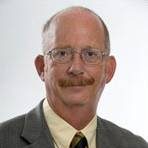For more than a decade, Division of Applied Social Sciences faculty Jon Simonsen and Bruce Fowler have been working to create a robust financial database tool for farmers, while also helping producers hone their own financial skills.
“The ultimate goal is to be able to go out there and get the best financial information to enable producers to make the best decisions for their farms and their families,” said Simonsen, professor of agricultural education.

The project makes use of dozens of agricultural education teachers at high schools and technical schools across the Midwest. These teachers offer adult classes to help farmers learn to keep proper financial records, file complex income taxes and generally keep their financial records in accordance with best practices. In turn, the farmers voluntarily and anonymously submit their financial information to a database that allows other farmers to search and compare what practices, crops and livestock are financially viable in their areas.
Some of the information that is entered into the database includes beginning and ending balance sheets, production data and data about crop land farmed with climate-smart practices. Fowler noted that when farmers are willing to enter the more detailed crop and practice information, which is voluntary, there are sometimes surprises in the data, and climate-smart practices have been one of those surprises in recent years.
“There is an assumption that they will get a little bit of a yield drag or a loss of profit by using climate smart practices,” Fowler said, “but that isn’t always the case. The initial data we began getting a couple of years ago showed that wasn’t the case at all. They are averaging about the same as the rest of the group using more traditional methods.”
The data is maintained and publicly available through the Center for Farm Financial Management at the University of Minnesota, a long-standing partner in this project.
Fowler, who is a post-secondary adult education professional development specialist, has a background in high school agriculture education, and works closely with the teachers who take part in the program. He said that each farmer that participates in the program gets personalized, one-on-one instruction, beginning with the instructor learning about their farm and the systems currently in place. The instructors then help identify what accounting systems will be a good fit and teach the farmer how to use the system with best practices. Instructors also help with tax preparation, and follow-up throughout the year.

Fowler emphasized that the farmers who participate are largely determined by the local agriculture teacher and which farmers are interested in the program. The results are a widely varied mix of operations of all sizes, ages, crops and livestock.
“There’s been a push for some specialty areas recently, so this database captures beyond corn and soybeans.” Fowler said. “The catch is that there’s not as much data available when you get too specialty areas”. Examples the pair have seen include elderberries and some cover crops. The difficulty with those are that sometimes the data may not be as reliable and you may lose the anonymity of the farmer within the database as the numbers are limited.
Other states participating in the program include Illinois, Minnesota and Wisconsin.
Since 2011, Simonsen and Fowler have been awarded more than $5 million in USDA National Institute of Food and Agriculture grants to support his efforts in leading this project. He noted that the CAFNR Grants Office has been instrumental in his ability to keep this program well-funded.
“The CAFNR Grants Office really deserves a lot of kudos,” Simonsen said. “We would not be able to get these grants and successfully compete without our friends in the CAFNR Grants Office.”